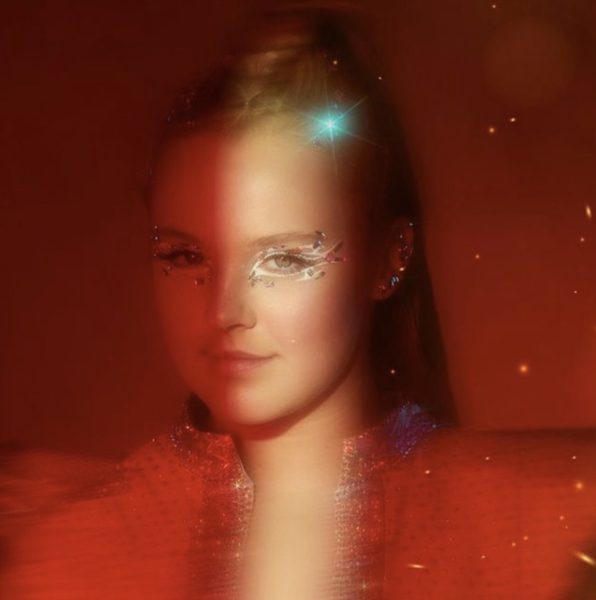Pixies Disappoint on “Beneath the Eyrie”
The Pixies are more important to rock history than any band not named The Velvet Underground or The Beatles. On Friday, they released their seventh album “Beneath the Eyrie.”
Famously formed in 1986 when Kim Deal responded to Francis Black’s ad calling for a bassist who liked both Hüsker Dü and Peter, Paul and Mary, the band released their debut EP a year later and then one album per year from 1988 until 1991. All were classics, but out of the first four, it’s the first two, 1988’s “Surfer Rosa” and 1989’s “Doolittle,” to which the Pixies owe their legacy.
On “Surfer Rosa,” Black injected his melodicism into a style mostly derived from ’80s hardcore and post-punk, and which was filtered through the raw, lo-fi production values of producer Steve Albini. Kurt Cobain liked the album’s sound so much he hired Albini to produce “In Utero” in hopes of recreating it. “Doolittle,” on the other hand, offered a polished version of “Surfer Rosa” which solidified the band’s crucial innovation of loud/soft dynamics. Kurt Cobain credited “Doolittle” with inspiring him to incorporate hooks on “Nevermind” and claimed that “Smells Like Teen Spirit” was an attempt to rip off the Pixies.
But the Pixies’ influence went far beyond Nirvana. The loud/soft dynamics that the Pixies developed would go on to reshape mainstream American rock. The whole ’90s indie rock movement can find its roots in the Pixies’ first two records. Indeed, bands like Pavement, Spoon and Modest Mouse all began their careers as glorified Pixies clones. Bands of contemporary indie rock such as Car Seat Headrest and Mannequin Pussy have absorbed the Pixies influence as well.
After breaking up in 1993, the Pixies reunited in 2004 and spent 10 years in an endless tour cycle before releasing new albums again in the ’10s. These albums, 2014’s Indie Cindy and 2016’s Head Carrier, were met largely with criticism and derision. Fans felt betrayed by the albums, which abandoned both the band’s trademark loud/soft dynamics and their formerly ever-pervasive theme of danger. The albums also felt the absence of Kim Deal to an uncomfortable degree — Deal had initially joined the Pixies in their reunion but quit the band in 2013. She, however, continues to release new music with her excellent 1990s alt-rock band The Breeders.
It was not the stylistic change or loss of a key founding member that made the albums bad, however. If the Pixies wanted to make their version of “Loaded,” that’d be fine. Instead, these albums revel in the utmost mediocrity. As it turns out, Black Francis the singer-songwriter/tunesmith is both a terrible singer-songwriter and a heavily inconsistent tunesmith.
“Beneath the Eyrie” is unfortunately no different than its 2010s predecessors. The album is not without its redeeming qualities. Black Francis’ devotion to hooks guarantees him at least a few catchy songs per album; on this one, they come with titles such as “In the Arms of Mrs. Mark of Cain,” “Catfish Katie” and “Long Rider.” The band’s rhythm section also receives quality showcases in the form of David Lovering’s propulsive drumming on “In the Arms of Mrs. Mark of Cain” and Deal-replacement Paz Lenchantin’s excellent baseline on “On Graveyard Hill.” Guitarist Joey Santiago seems to be the only band member committed to recapturing the band’s original sound, and he find modest success through his use of feedback on “On Graveyard Hill” and his outbursts that punctuate the lines of each verse on “Catfish Katie.”
But if you’ve noticed my compliments have all been limited to the same handful of songs, it’s because this album is ridiculously front-loaded. Past its opening trio, and with the exception of “Long Rider,” the LP is boring. Even during his experimentations with tedious slow tempos on songs like “Silver Bullet” and “Daniel Boone,” Francis reveals that he only knows one way to write a melody. At least he knows that one way, though — both he and Santiago are, throughout the album, completely incapable of finding anything melodious to play on guitar. And the value of dynamics is called into question entirely when Francis tries to vary his vocals; his shouting on “St. Nazaire” — which would have been perfectly at home on any of the Pixies’ first four records — sounds silly now, starkly demonstrating Francis’ age.
Speaking of silly, the album proves that when not making use of shock value, Francis cannot write lyrics. “Donna picks out a flower/Gives her a witchy power” (“On Graveyard Hill”), “I don’t mind the rain/But I’m ready for love” (“Ready for Love”) and “The Lord Howe reef/Looks like Daniel Boone / And he was showing me his smile” (“Daniel Boone”) are all plenty embarrassing, for very different reasons.
But “Beneath the Eyrie” is not defined by its lows anymore than it is defined by its highs. Rather, it is defined by the merging of the two into a thoroughly fine and mostly mediocre forty minutes of rock music.
You could listen to this record, but it’d be a waste of time. You’d be better off listening to the Pixies’ classics, “Surfer Rosa” and “Doolittle.” Whether you’d be listening for your first time or your hundredth, there will still be far more to discover than in here. You’d also be better off listening to Kim Deal’s albums with The Breeders; 1993’s “Last Splash,” in particular, towers over all the Pixies albums that Francis has made without her.
You’d be best off listening to any of the countless contemporary indie rock bands who have absorbed the influence of the early Pixies. These bands have adopted not only the sound of the Pixies, but also the danger and spirit of bold innovation.
The actual Pixies have become dinosaurs of rock before our eyes.
















Brandon • Jul 22, 2020 at 4:55 pm
The idea that the band “developed” loud/soft dynamics has been an annoyingly long-lived falsehood. Big difference between developing something and popularising it within a medium or genre, alternating volume to emotive effect had already existed in music and even in popular music – it’s a pretty basic idea to make a chorus loud and a verse soft, for the punk and new-wave inspired youngsters of the era it would’ve seemed revolutionary but that only makes it new to them.
Additionally, it’s reductive to call early Pavement, Modest Mouse, or Spoon “glorified Pixies clones” – Modest Mouse in particular seem to have suffered from this reputation, which at first glance seems to track but the lo-fi guitar of early Modest Mouse seems more akin to Pavement and only started to get ‘Pixiefied’ when they tightened up their sound and while I’m sure those boys were bumping Pixies throughout the 90’s their first three albums used tempo to accomplish what Pixies did with volume.
I mean, it’s not like if Isaac Brock never heard Black Francis’ vocals he’d have sounded like Dido – it seems fairly evident the guy was working with a toolbox that was limited and predefined from the get-go.
All of that aside – Pixies don’t have to recapture their old sound. They don’t HAVE to do anything, and if a fan feels “betrayed” they can go queue up their old albums on Spotify. It’s evident from interviews that Charles FEELS like he owes the fans something, but he doesn’t owe them, actually. None of the band do and the fans are entitled to nothing.
Bands like the Pixies did their art, put in their money work, and left their influence. They don’t HAVE to do anything else and the sentiment that you either have to keep putting out cutting-edge work or go the hell away (lest you somehow “hurt your legacy”) is some of the most annoying and ridiculous fan-entitlement fantasy.
Putting out an album full of mediocre work doesn’t somehow retroactively hurt the quality of prior material – which is all an act’s “legacy” really is – Doolittle wont somehow be less influential (and thusly the Pixies less influential) if their modern work was a let down – which strangely seems synonymous with “different” in this article – but that’s another dumb idea latched on to by many modern fans and perpetuated by a fire-fanning music media that I just don’t have the patience today to tackle.
In fact, going back to Modest Mouse – even while the critical appreciation for their more recent work is far less than that of their earlier material, they’ve somehow gotten MORE popular and accrued more of a legacy for themselves as an act regardless. As that modern appreciation faded, the popularity for their back catalog (those “Pixie clone” albums you mentioned) increased and increased the band’s popularity over-all.
At one point Moon & Antarctica was universally considered their best work with Good News their most commercially accessible – now it seems like things have swung in favor of Lonesome Crowded West – which at one point was actually totally out of print.
It’s almost like worrying about retroactive deppreciation is alarmist, entitled horsecrap but that’s just me.
At any rate, Pixies or hell – even Modest Mouse – could release an album filled with nothing of sounds captured by cell phone mic of their dog humping a sqeak-toy and it would hardly matter because they’ve more-or-less reached the other side of the hill. They put in their work for the medium, if they want to change their sound on new material or just tour themselves into the ground then that’s their prerogatives. If they release something good, that’s a wonderful surprise if not, then it doesn’t really matter anyway. The old stuff’s still itself, so to me it makes no nevermind.
FredinNH • Sep 18, 2019 at 4:42 pm
Congrats on writing the most negative review yet for this album. I strongly disagree with your verdict.
While agree that the album starts out with a trio of excellent songs, I think there’s plenty of gold to mine in the remaining 9 tracks. But I’m an old guy, almost as old as the members of the pixies, and I’ve moved on, as has the band, from the original 4 albums (except that I still occasionally listen to the best one, trompe le monde). Ready for love, silver bullet, and the last 3 tracks are vintage Charles Thompson, meaning that they grow on you. All of his songs take a while to sink in, which is why nobody realized how amazing they were until they were breaking up.
If you want to know what Charles is capable of listen to his finest work – teenager of the year. It’s better than anything the pixies recorded. Just make sure you give it a chance. It took me about 3 careful listens way back in the day before it started clicking.
The band members are in their 50s and just wrote an outstanding contemporary alternative album. Let’s all be happy that they are making music, and stop comparing their current output to music made by people in their early 20s, 30 years ago.